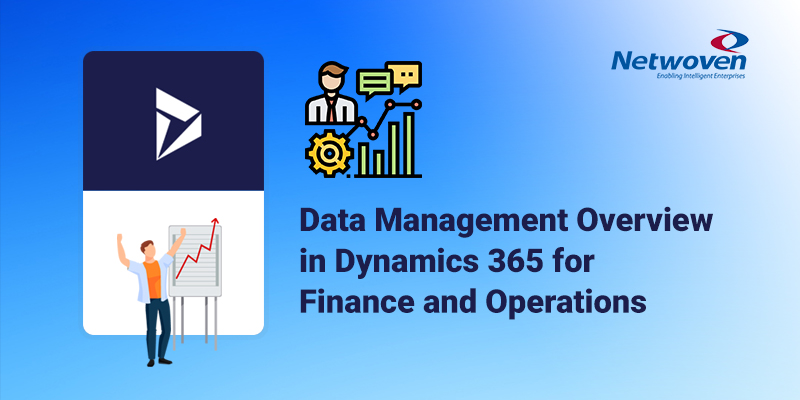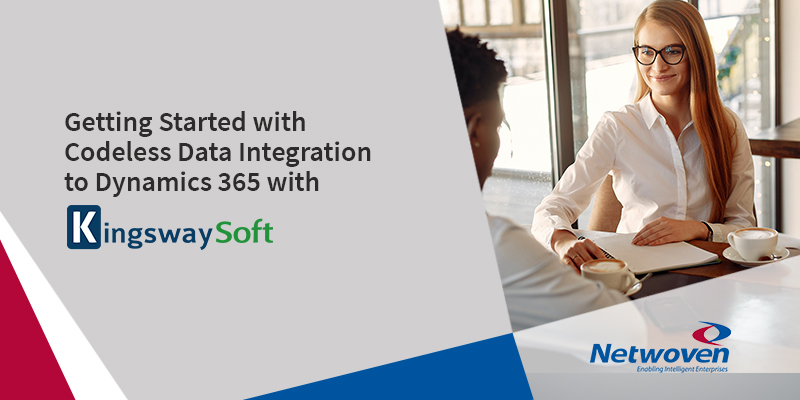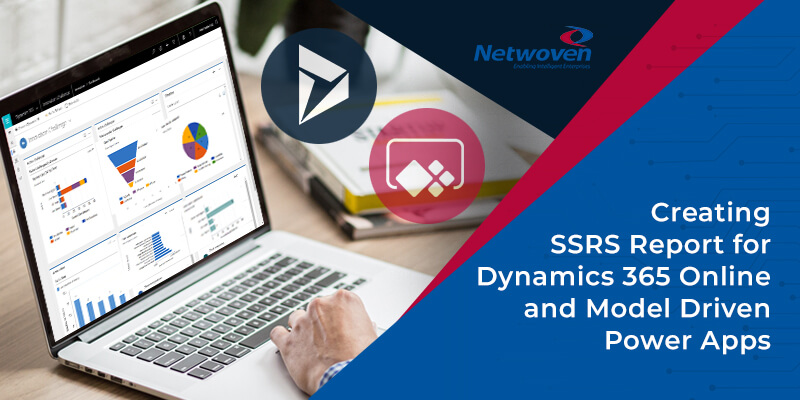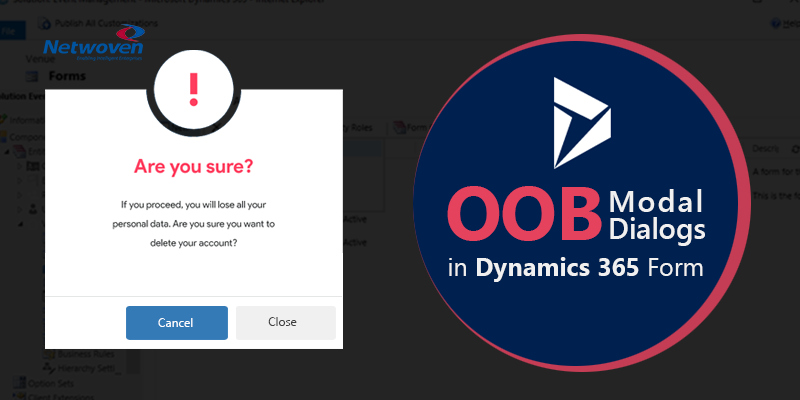This blog gives an overview about data management using Data Import Export Framework (DIXF).
What is Data management framework or DIXF?
The Data Management Framework of Dynamics 365 Finance and Operations – provides advanced data management capabilities, which makes the overall data export and import seamless easy.
This framework provides an easy to use front end interface for data export and import management, so that regular pro-users of Dynamics 365 can interact with it, without requiring advanced knowledge of development and database.
DIXF comes with a set of standard entities which can be used directly for importing data for different requirements. If the area where data needs to imported is not part of the standard entity, then it can be handled through creating a custom entity.
DIXF Overview:
DIXF provides mainly three types of data import/export.
- Interactive data import/export : “Data management” module in Dynamics 365 for Finance & Operations enables functional user to perform import/export through UI navigation pages.
- Real time data integration : DIXF supports real time data exchange using OData (REST API) or custom services.
- Asynchronous integration : We can setup periodic & unattended exchange of data with external system. It can be handled by scheduling batch process for DMF job .

Whenever we do ERP implementation, migrating the historical data into new system is always a big challenge because the data is always crucial for the business and it should be accurate. To address such issue, we have DIXF in place which works well in such scenarios. Without much coding, we can migrate almost all critical business areas data into Dynamics 365 for Finance & Operations.
What is Data migration?
Data migration is the process of moving data from one location to another, one format to another, or one application to another. Generally, this is the result of introducing a new system or location for the data.
Data migration involves 3 basic steps:
- Extract data
- Transform data
- Load data
DIXF is not just for data migration, it has lot more capabilities like integration, regular export/import data, Mobile integrations, Office integration etc.
UI Navigation:
In Dynamics 365 for Finance & Operations, we have “Data management” under “System Administration” module through which all the functionalities of DIXF can be accessed is as shown below.
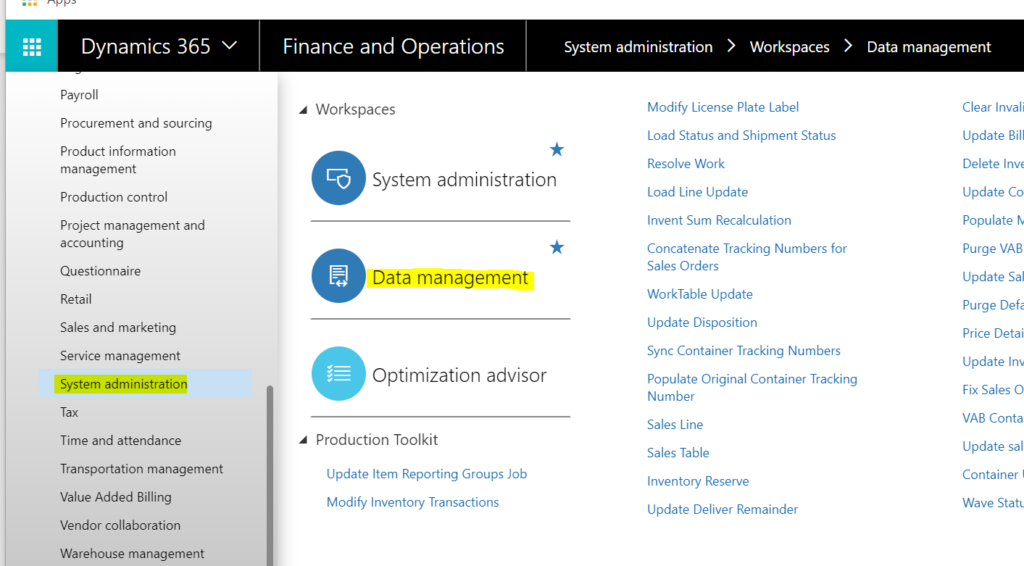
How does DIXF works?
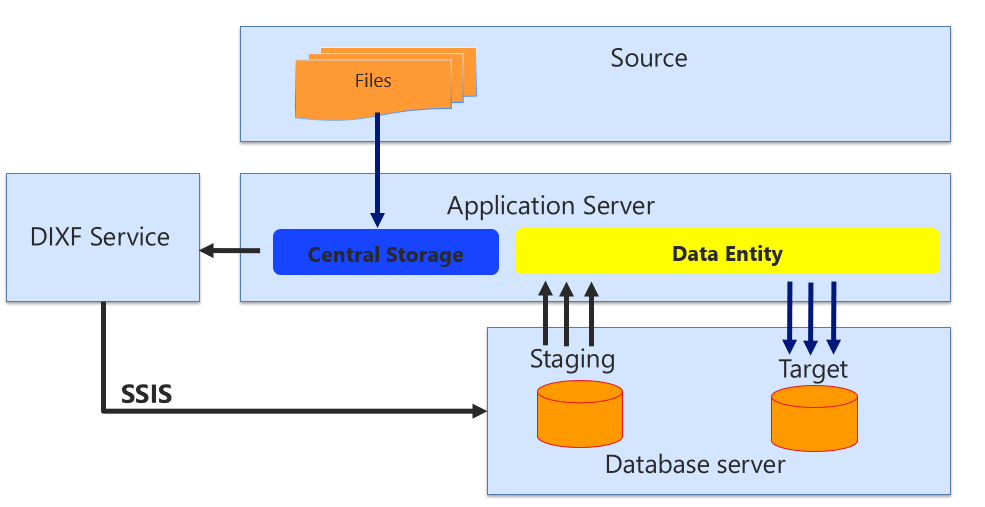
The first step is to load the file from the source to the central storage on Azure. The data import/export framework then picks up the data from the central storage and then pushes it into the staging tables using SQL Server Integration Services. By using SSIS, the data move is performed in a highly efficient manner. From staging, the data is moved to the target using data entities that have been defined.
Different types of source files:
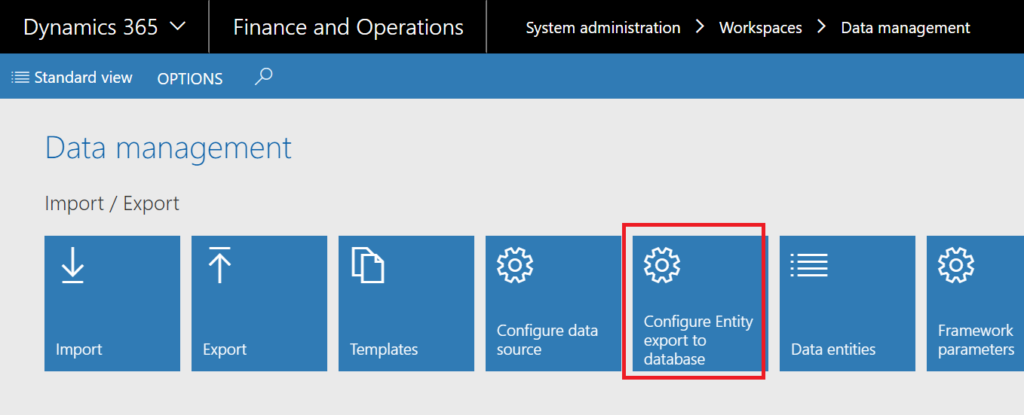

Source can be of any of the below formats:
- File – Import data from a fixed-width or delimited text file, XML file, or Microsoft Excel file.
- Operations – Import data from another Microsoft Dynamics AX instance.
- ODBC – Import data from another database, such as Microsoft SQL Server or Microsoft Access.
- Package – The data packages allow you to group entities into a single package that can be used to move groups of data from one system to another. Data packages are a key concept for many application lifecycle management scenarios such as copy configuration and data migration.
- Azure SQL DB – It enables export data entities from the application into their own Microsoft Azure SQL database. This feature is also known as bring your own database (BYOD).
I will be covering data management using Bring Your Own Data (BYOD method) in detail in the next blog.

